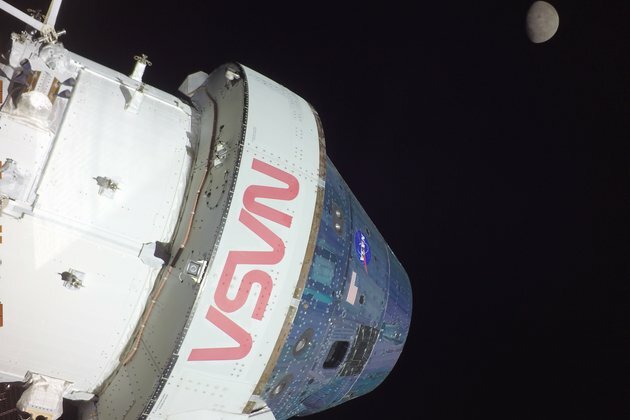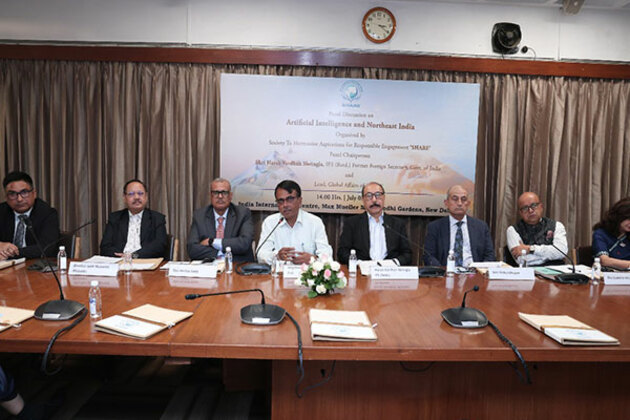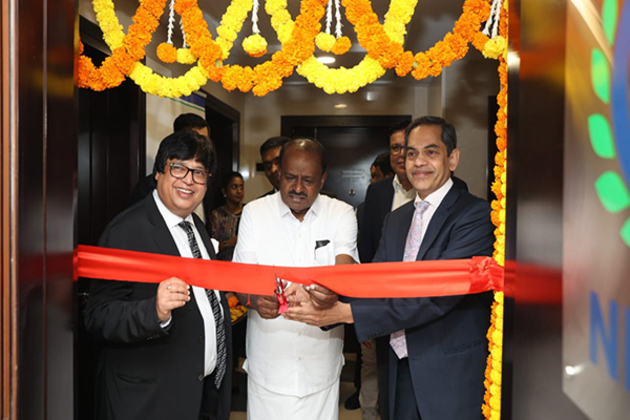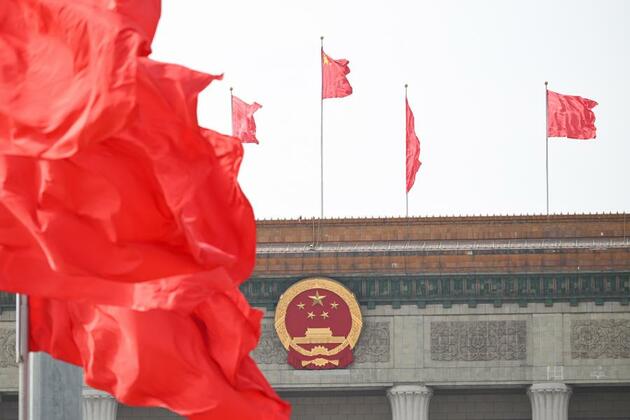Artemis: why it may be the last mission for Nasa astronauts
The Conversation
24 Nov 2022, 00:09 GMT+10

Neil Armstrong took his historic "one small step" on the Moon in 1969. And just three years later, the last Apollo astronauts left our celestial neighbour. Since then, hundreds of astronauts have been launched into space but mainly to the Earth-orbiting International Space Station. None has, in fact, ventured more than a few hundred kilometres from Earth.
The US-led Artemis programme, however, aims to return humans to the Moon this decade - with Artemis 1 on its way back to Earth as part of its first test flight, going around the Moon.
The most relevant differences between the Apollo era and the mid-2020s are an amazing improvement in computer power and robotics. Moreover, superpower rivalry can no longer justify massive expenditure, as in the Cold War competition with the Soviet Union. In our recent book "The End of Astronauts", Donald Goldsmith and I argue that these changes weaken the case for the project.
The Artemis mission is using Nasa's brand new Space Launch System, which is the most powerful rocket ever - similar in design to the Saturn V rockets that sent a dozen Apollo astronauts to the Moon. Like its predecessors, the Artemis booster combines liquid hydrogen and oxygen to create enormous lifting power before falling into the ocean, never to be used again. Each launch therefore carries an estimated cost of between $2 billion (Pound 1.7 billion) and $4 billion.
This is unlike its SpaceX competitor "Starship", which enables the company to recover and the reuse the first stage.
The benefits of robotics
Advances in robotic exploration are exemplified by the suite of rovers on Mars, where Perseverance, Nasa's latest prospector, can drive itself through rocky terrain with only limited guidance from Earth. Improvements in sensors and artificial intelligence (AI) will further enable the robots themselves to identify particularly interesting sites, from which to gather samples for return to Earth.
Within the next one or two decades, robotic exploration of the Martian surface could be almost entirely autonomous, with human presence offering little advantage. Similarly, engineering projects - such as astronomers' dream of constructing a large radio telescope on the far side of the Moon, which is free of interference from Earth - no longer require human intervention. Such projects can be entirely constructed by robots.
Instead of astronauts, who need a well equipped place to live if they're required for construction purposes, robots can remain permanently at their work site. Likewise, if mining of lunar soil or asteroids for rare materials became economically viable, this also could be done more cheaply and safely with robots.
Robots could also explore Jupiter, Saturn and their fascinatingly diverse moons with little additional expense, since journeys of several years present little more challenge to a robot than the six-month voyage to Mars. Some of these moons could in fact harbour life in their sub-surface oceans.
Even if we could send humans there, it might be a bad idea as they could contaminate these worlds with microbes form Earth.
Managing risks
The Apollo astronauts were heroes. They accepted high risks and pushed technology to the limit. In comparison, short trips to the Moon in the 2020s, despite the $90-billion cost of the Artemis programme, will seem almost routine.
Something more ambitious, such as a Mars landing, will be required to elicit Apollo-scale public enthusiasm. But such a mission, including provisions and the rocketry for a return trip, could well cost Nasa a trillion dollars - questionable spending when we're dealing with a climate crisis and poverty on Earth. The steep price tag is a result of a "safety culture" developed by Nasa in recent years in response to public attitudes.
This reflects the trauma and consequent programme delays that followed the Space Shuttle disasters in 1985 and 1993, each of which killed the seven civilians on board. That said, the shuttle, which had 135 launches altogether, achieved a failure rate below two percent. It would be unrealistic to expect a rate as low as this for the failure of a return trip to Mars - the mission would after all last two whole years.
Astronauts simply also need far more "maintenance" than robots - their journeys and surface operations require air, water, food, living space and protection against harmful radiation, especially from solar storms.
Already substantial for a trip to the Moon, the cost differences between human and robotic journeys would grow much larger for any long-term stay. A voyage to Mars, hundreds of times further than the Moon, would not only expose astronauts to far greater risks, but also make emergency support far less feasible. Even astronaut enthusiasts accept that almost two decades may elapse before the first crewed trip to Mars.
There will certainly be thrill-seekers and adventurers who would willingly accept far higher risks - some have even signed up for a proposed one-way trip in the past.
This signals a key difference between the Apollo era and today: the emergence of a strong, private space-technology sector, which now embraces human spaceflight. Private-sector companies are now competitive with Nasa, so high-risk, cut-price trips to Mars, bankrolled by billionaires and private sponsors, cold be crewed by willing volunteers. Ultimately, the public could cheer these brave adventurers without paying for them.
Given that human spaceflight beyond low orbit is highly likely to entirely transfer to privately-funded missions prepared to accept high risks, it is questionable whether Nasa's multi-billion-dollar Artemis project is a good way to spend the government's money. Artemis is ultimately more likely to be a swansong than the launch of a new Apollo era.
Author: Martin Rees - Emeritus Professor of Cosmology and Astrophysics, University of Cambridge 
 Share
Share
 Tweet
Tweet
 Share
Share
 Flip
Flip
 Email
Email
Watch latest videos
Subscribe and Follow
Get a daily dose of International Technology news through our daily email, its complimentary and keeps you fully up to date with world and business news as well.
News RELEASES
Publish news of your business, community or sports group, personnel appointments, major event and more by submitting a news release to International Technology.
More InformationComputers
SectionApple allows outside payment links under EU pressure
SAN FRANCISCO, California: Under pressure from European regulators, Apple has revamped its App Store policies in the EU, introducing...
Seminar held in national capital focusing prospects of Artificial Intelligence in Northeast region
New Delhi [India], July 2 (ANI): A seminar on the prospects and possibilities of artificial intelligence in Northeast India was organised...
NMDC expands global footprint with its new office in Dubai, forging global pathways in mining
Hyderabad (Telangana) [India], July 1 (ANI): NMDC, India's largest iron ore producer, marked a significant milestone with the inauguration...
China completes barrier belt to prevent eastward expansion of its fourth-largest desert
YINCHUAN, July 1 (Xinhua) -- China on Monday reached a major milestone in desertification control by completing a barrier belt along...
Elite Women's Boxing Tournament: Lovlina Borgohain storms into semifinals
Hyderabad (Telangana) [India], June 29 (ANI): Olympic Games Tokyo 2020 medalist Lovlina Borgohain eased past Punjab's Krisha Verma...
Ankushita Boro, Nikhat Zareen advance to semi-finals at Elite Women's Boxing
Hyderabad (Telangana) [India], June 29 (ANI): Former youth world champion Ankushita Boro showcased her class on Day 2 of the Elite...
Internet
SectionCanadian tax on US tech giants dropped after Trump fury
WASHINGTON, D.C.: On Friday, President Donald Trump announced that he was halting trade discussions with Canada due to its decision...
DeepSeek faces app store ban in Germany over data transfer fears
FRANKFURT, Germany: Germany has become the latest country to challenge Chinese AI firm DeepSeek over its data practices, as pressure...
Daily World Briefing, July 3
Chinese premier to attend 17th BRICS Summit in Brazil, visit Egypt China looks forward to working with all parties to consolidate...
British pound may go woke
The planned redesign reportedly seeks to replace historical figures with diversity themes A plan by the Bank of England (BoE) to...
"Not going to let this Communist Lunatic destroy New York": Trump again takes a dig at NYC Dem primary Mamdani
Washington, DC [US], July 2 (ANI): US President Donald Trump was yet again at his rhetoric against the Democratic mayoral nominee for...
Moscow responds to NATO chiefs Jesus comment about Lavrov
The Russian foreign minister has not worked in vain, since he made Mark Rutte remember Christ, Maria Zakharova has said NATO Secretary...













